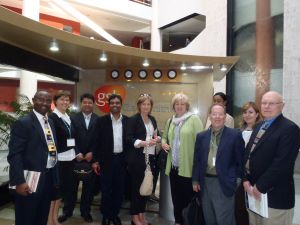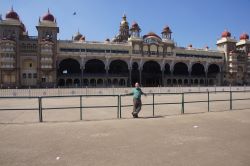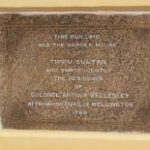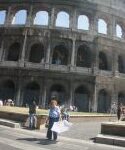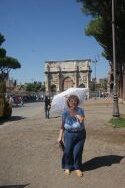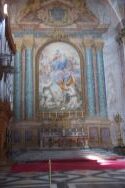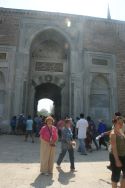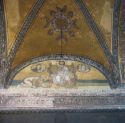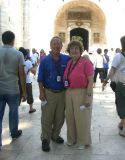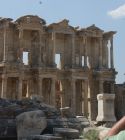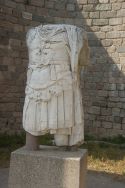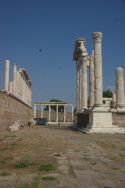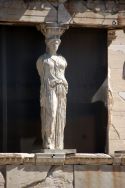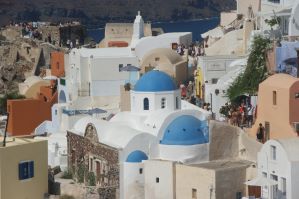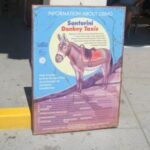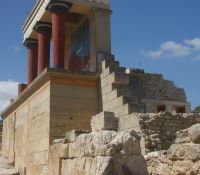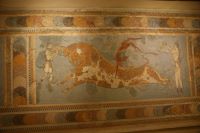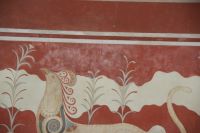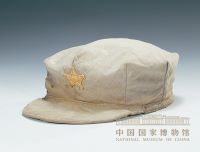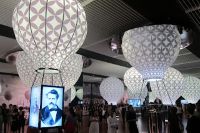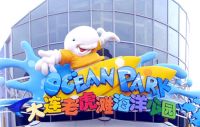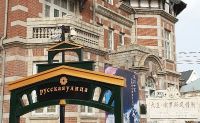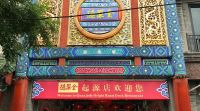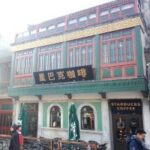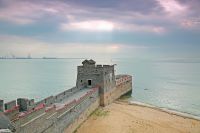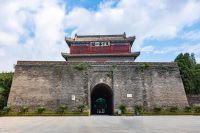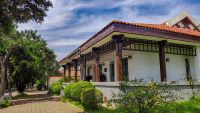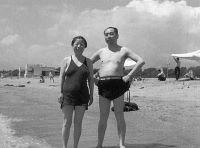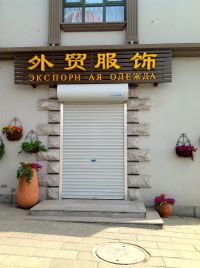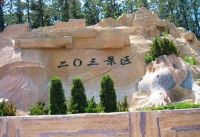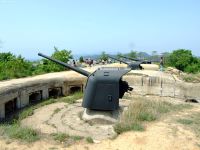One of today’s speakers described India as “islands of excellence in a sea of chaos,” and that certainly applies to our site visits on Thursday. We went to two IT companies, which is I think what the world pictures when you mention Bangalore, the “Silicon Valley” of India.
The first was Infosys, one of the largest of the IT providers. It sits in a “campus” (which is euphemism for a service ‘factory’). Service factories rather resemble campuses, and in the IT environment, which I saw 2 years ago in Hangzhou, China, at Alibaba, are frequently populated with employees scarcely removed from the college campuses. The average age is probably 24, with a standard deviation of +1. The staffing of these companies keeps the average low—and the costs accordingly down. Even hiring 38,000 people a year, Infosys loses about 20% of its staff due to attrition. The entry salary for a college graduate (mostly engineer and business students—the quantitative skills are a requisite) is $500 a month. Compare that with starting salaries in the U.S., and you’ll understand why much of the Business Processing operations (customer service, computer operations, systems) has gravitated to these companies.
The company is a classic case in successful entrepreneurship. Seven young college grads pooled $250 each in the late 70s to start it up; revenues this year were over $6 billion. Two of the founders didn’t like the business model and left before the company started; I wonder what they are doing. Part of the reason the company is so well known is that one of the founders, who was president of the company for a long time, was friends with Tom Friedman of the NY Times. In the CEO’s office, he and Friedman discussed the idea of The World is Flat, a story documented in the first chapter of the book—as an “Aha!” moment. I can well understand it. The campus is modern, with 50 acres, lakes, a gym, seven restaurants (we had lunch at one, and Sodexo might well study the model), great classrooms (President Wilson might have the IWU architects visit), an island in a sea of chaos. To get to this island of excellence, we had to travel on a road system that makes most American cities look progressive (and explains some of the problems of the Indian economy—especially distribution. Half of the crops never make it to market; they rot first).
Infosys is big on training. One of its strengths is a “foundations” course, that gives six months of training in Mysore to 10,000 recruits at a time; ironically, Infosys probably hires a big chunk of the graduates from the best Indian universities (and the top ones are really good; the Indian Institute of Technology–I think there are several campuses–takes the top 2,000 of the 200,000 students who sit for the college boards); as I understand it, the colleges take students based either on their scores on the one day exam—with no reference to Eagle Scout, football captain (though they might make an exception for cricket)—or a certain number based on a reverse discrimination. To combat the effects of the caste system, which rendered people permanently in a caste, the government requires hiring the former untouchables in the civil service and reserves a number of seats at the universities. It’s not at all uncommon in the Asian societies to emphasize education as the ticket out of poverty and/or caste, not unlike the United States, but someone told us that Indians spend up to 60% of their income on education. Where this paragraph was going, though, was to note the irony of spending 6 months on training the graduates of those good schools in the skills they need to do the job Infosys hired them to do!
Like most businesses, the Indian IT industry is mature, which is to say, the companies have a hard time differentiating themselves since they provide pretty much the same service. Infosys gave us one indication of the direction it is moving—consulting. One of the leaders of the consulting group gave us an example of the kind of workshop he will lead with a company (Infosys customers are mainly but not entirely Fortune 500 companies). It rather resembled the professional bureaucracy I talk about in my strategy classes—the application of 21 dimensions (for the 21st Century), such as the digital customer, whose demands include self service, meeting one’s own needs, and the cocreation of value. We discussed what the application of these 21 dimensions might mean to a university.
We then drove across town to a second IT company, Mphasis, which gave a nice case study of a small business (only 1b$, but up triple from when it was purchased by EDS and then Hewlett Packard three or four years ago; HP has a majority share, but the Indian government would not let a foreign country buy 100% of an Indian company until recently). It started in California as the dream of Jerry Rao, who then moved it back to India. His return is symbolic of something that is happening more frequently, as the Indian government and many companies looking for talent have encouraged Non Resident Indians (NRI) to return home to work and live.
We had one speaker, in charge of the mergers and acquisitions of a cash- rich company (which he said was rather typical of the IT firms), who was an NRI who told us about the Mphasis effort to put emphasis (had to say that) on developing niches (I thought it was interesting that the company, which does consulting, itself used an American consulting firm McKinsey and Company to help identify the strategy). Mphasis went geographical—India, western Europe, and the United States—and narrowed its industries to primarily Banking and Insurance (probably does something with State Farm, though I didn’t ask). Like every business, especially service businesses, they told us, “The race for talent is becoming bloodier.” They hired 15,000 new employees last year, some to man divisions in the United States, because for Indians, a posting in the United States is no longer as desirable as it once was; our speaker said that his son was acclimated in 2 weeks, having joined the football (i.e., soccer) and cricket teams (sponsors are paying more than superbowl rates for advertising during the match going on between India and Australia). In addition, the Economic Times today featured an article reporting a decline in the issuing of work visas for Indian nationals hoping to emigrate to the United States.
One of the most interesting features of the talk was from the Corporate Responsibility Officer, who indicated that there is a real gap between the islands and the sea of chaos. Like Infosys, and, indeed, most companies today, Mphasis has social goals as part of its culture. It has chosen to put money into education, start up entrepreneurship, and the disadvantaged. For example, after serious flooding last year, the company decided to support the building of toilets in three villages that had no toilets. It paid for fifty of them, and that prodded the government to put up money for another hundred.
No more than a hundred miles from our “Islands of Excellence” are villages which until now, never had bathrooms. The officer also told us about the campaigns necessary to change behavior so that the villagers would USE the toilets, which included a pledge to do so.
I was reminded of my visit years ago to Korea. When I met with a Scout group, they asked me what my troop did for a good turn. I replied proudly that we had just assisted the Methodist women in their big fundraiser—an attic sale. I was startled when they told me they worked at a leper colony.
I’m thankful that we don’t need to do a good turn for lepers or to build toilets for villages that never had them in the sea of chaos.
Have a Namaste
